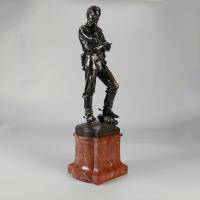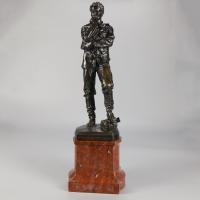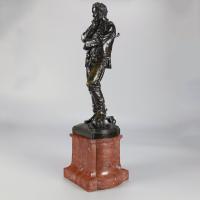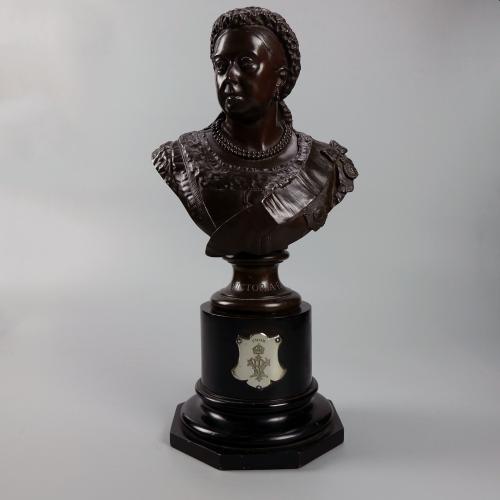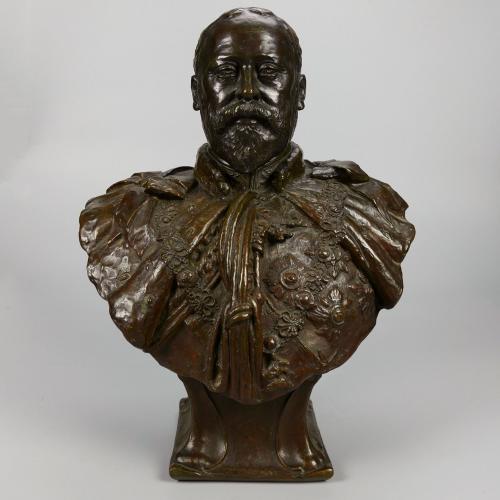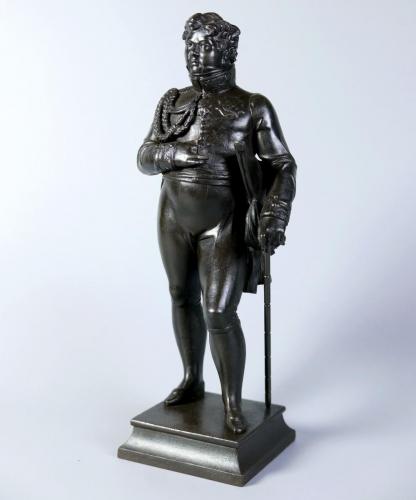
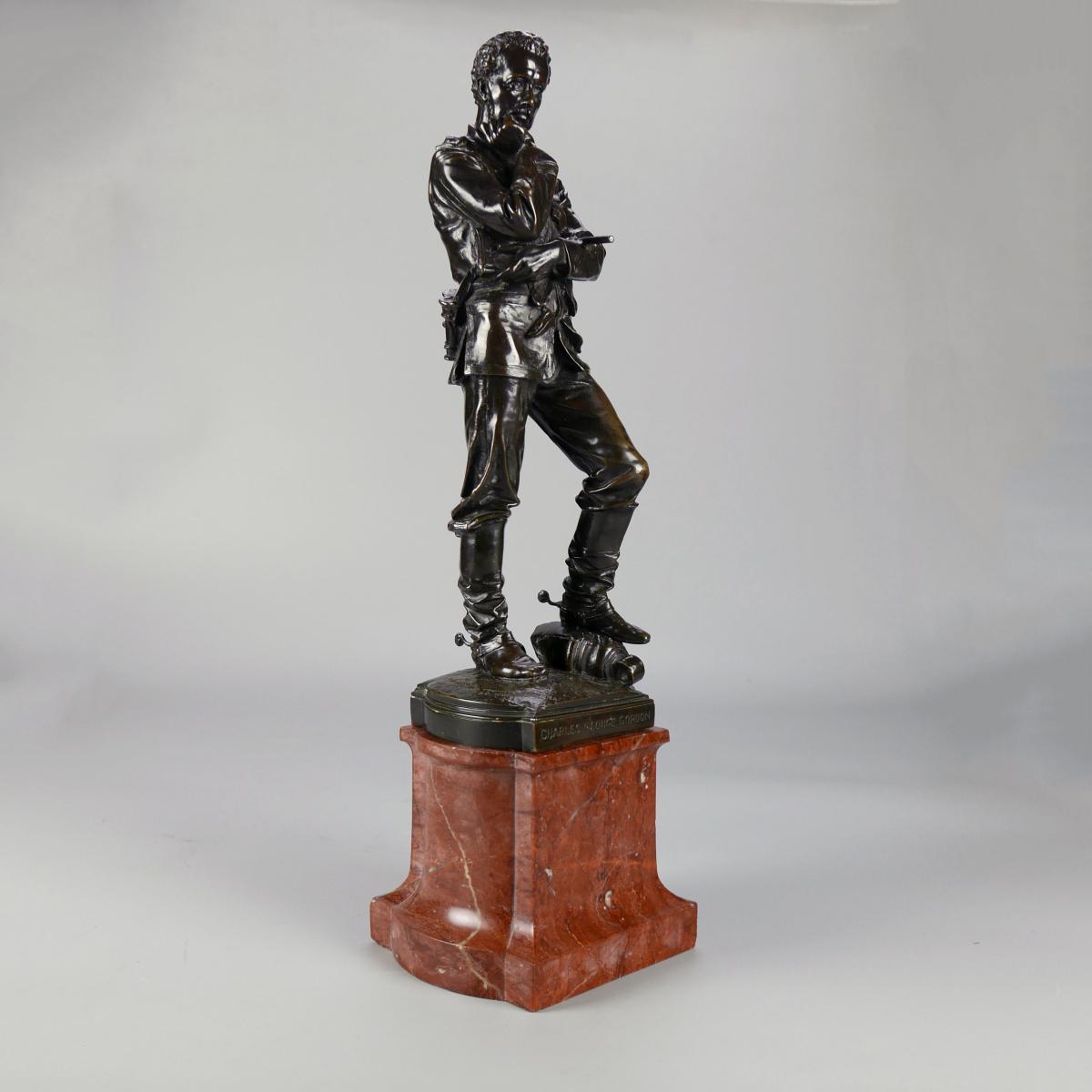
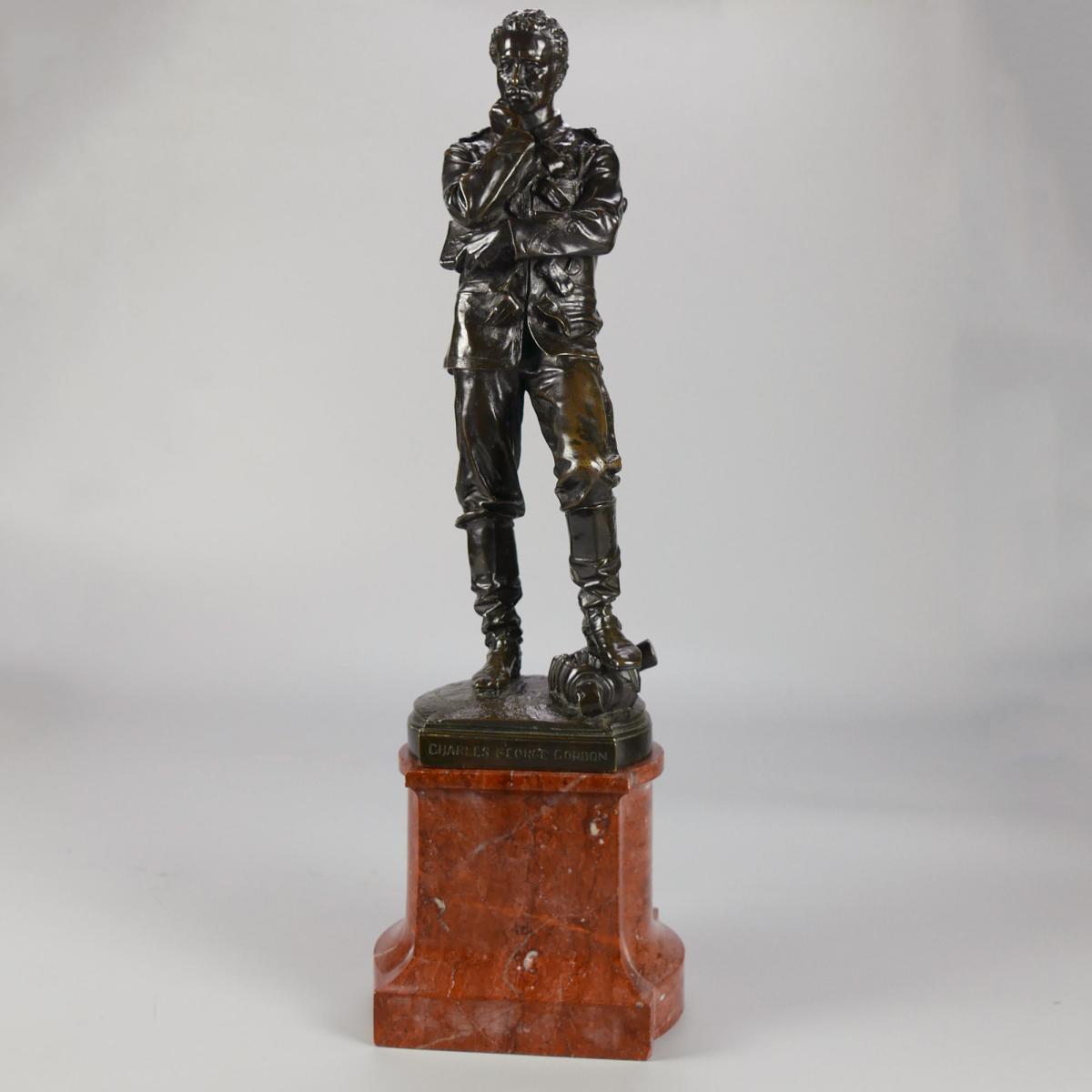
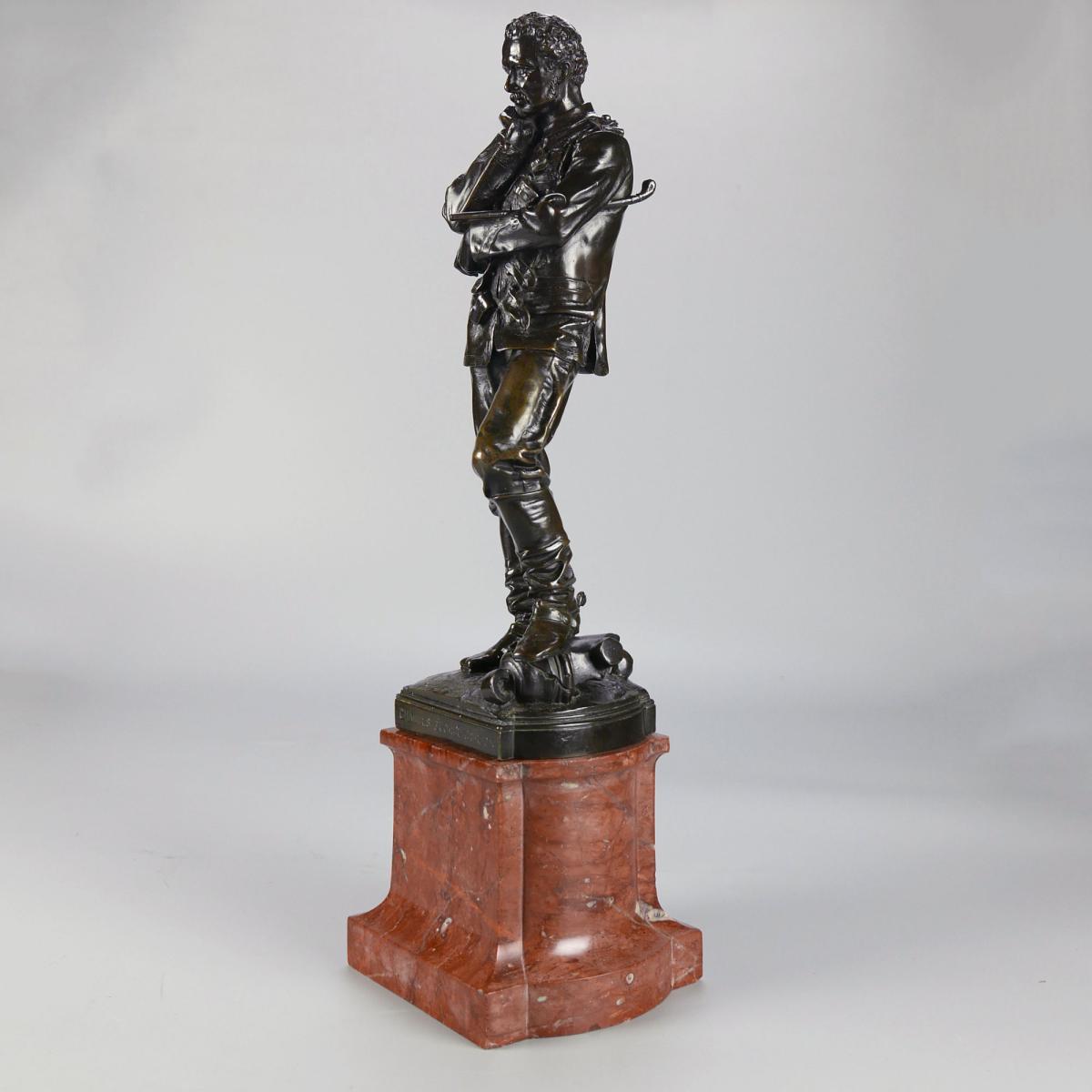
Price
£7800.00This object is eligible for a Certificate of BADA Provenance
The BADA Standard
- Since 1918, BADA has been the leading association for the antiques and fine art trade
- Members are elected for their knowledge, integrity and quality of stock
- Our clients are protected by BADA’s code of conduct
- Our dealers’ membership is reviewed and renewed annually
- Bada.org is a non-profit site: clients deal directly with members and they pay no hidden fees
Gordon of Khartoum Standing Figure, 1889.
Height: 37cm (14.25in).
Bronze. The present figure is a reduced scale model of the Gordon statue on Victoria Embankment by Sir William Hamo Thornycroft RA (1850-1925). It depicts the Hero of Khartoum in pensive mood dressed in short frock coat, a pair of binoculars slung over his left shoulder, Bible in hand, and left foot raised on a broken artillery piece. His famous cane - ‘the wand of victory’ - with which he led the Ever Victorious Army in China in more than thirty engagements against Taiping rebels - is tucked under his left arm. The obverse of the base is inscribed ‘Charles George Gordon’ and the reverse ‘Published by Arthur Leslie Collie / 39b Old Bond St., London May 6 1889’. Signed and dated ‘Hamo Thorneycroft R.A. / SC 1888’ on the naturalistic groundwork. Sold with, but not attached to, its original rosso antico marble ogee-shaped, stepped plinth (12cm high).
Major-General Charles George Gordon CB (1833-1885) was born in Woolwich into a large and close-knit family. He entered the Royal Military Academy as a Gentleman Cadet in 1848, intending to follow his father into the artillery, but hot-headed and impetuous, he was commissioned instead into the Royal Engineers in 1852. The following year he submitted to the Christian ministry of a brother officer, privately confessing a need to 'subdue the flesh’, while developing ‘a desire to die and be with the Lord’.
Despite the efforts of his family to keep him out of the Crimean War, he managed to get the dangerous frontline job of mapping the Russian trenches. Many engineer officers were killed in the role and Gordon was both surprised and somewhat disappointed to survive. In 1860 he was proceeded to China with the Allied Expeditionary Force and at the successful cessation of hostilities remained in country in service of the Chinese Emperor suppressing the Taiping rebellion. Truly believing that heaven was preferable to earth, he was fearless in instilling discipline in the mercenary force under his command and, armed only with his famous cane, invited death at every step. His fury at the execution of rebel leaders in his absence caused his resignation and resulted in the Emperor’s offer of 100,000 gold pieces and promotion to Mandarin should he return. Gordon dismissed the first and accepted the second, establishing his reputation as incorruptible.
In the mid 1860s he returned to England and laid himself open to the censure of ungenerous minds by dedicating considerable time to the care of the street urchins, or ‘scuttlers’ and ‘kings’, as he called them, of Gravesend. He fed them, taught them, counselled them and when they were filthy, he would wash them himself in the horse trough. Most importantly, he found them employment in the army, in barges and warehouses, and at sea. Later in the Sudan, whether tracking down slavers or suppressing a tribal rebellion, he would court death by delighting in outpacing his military escort in order to arrive alone in the enemy's lair. Later in the final year of his life at Khartoum he proved himself dutiful to the point of self-destruction thereby allowing the followers of the Mahdi to end, if not resolve, the lifelong internal struggle between rebelliousness and conformity

Sir William Hamo Thornycroft RA (1850-1925) belonged to the Thornycroft family of sculptors and was brother to naval engineer John Isaac Thornycroft, their sister, Theresa, was the mother of the poet Siegfreid Sassoon. Hamo trained at the Royal Academy Schools where his primary influence was Frederic Leighton. Hamo won the Gold Medal of the Royal Academy in 1876, with the statue Warrior Bearing a Wounded Youth. He was the leading figure in the New Sculpture movement and was one of the youngest artists to be elected to the Royal Academy. After 1884, Thornycroft's reputation was secure and he received commissions for a number of major monuments, most notably the innovative General Gordon, originally sited in Trafalgar Square but moved during the Second World War to make way for the temporary exhibit of a Lancaster bomber. In 1953 Thornycroft’s Gordon was relocated to its current position at Victoria Embankment Gardens (Whitehall Extension), London SW1.
Thornycroft continued to be a central member of the sculptural establishment and the Royal Academy into the 20th century. He was knighted in 1917. In 1938 his statuette of General Gordon was reproduced once more. This time in silver as a regimental gift for 1st Battalion The Lancashire Fusiliers on their withdrawal from Tientsin (for which Gordon planned the British concession). Lady Thornycroft administered the conditions for the reproduction, stating that the model-making should only be done by one of her late husband’s pupils and that it should be approved by another of his pupils and that the model and the moulds should be returned to her. The model by Bradford-born pupil, Harold J. Youngman is now in Leeds City Art Galleries and the silver version, although not completed in time for the Fusiliers departure, was presented in June 1939.
The BADA Standard
- Since 1918, BADA has been the leading association for the antiques and fine art trade
- Members are elected for their knowledge, integrity and quality of stock
- Our clients are protected by BADA’s code of conduct
- Our dealers’ membership is reviewed and renewed annually
- Bada.org is a non-profit site: clients deal directly with members and they pay no hidden fees


